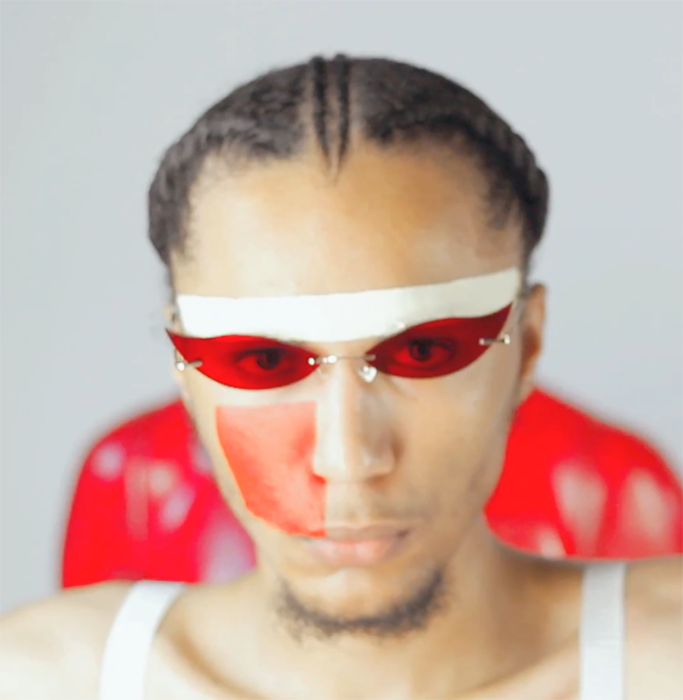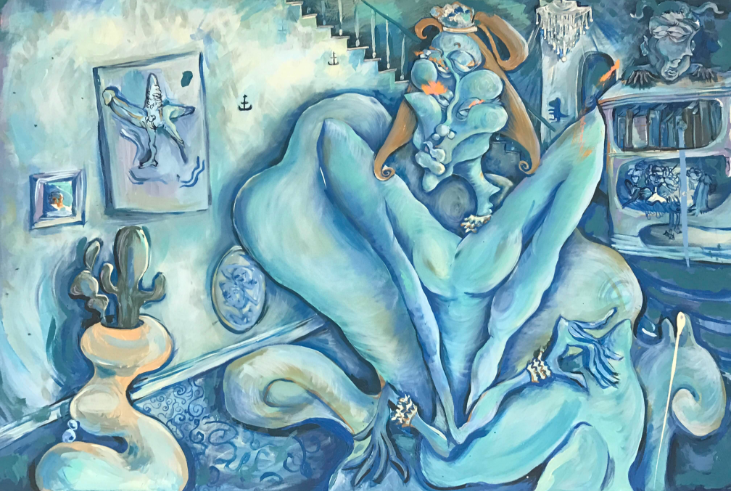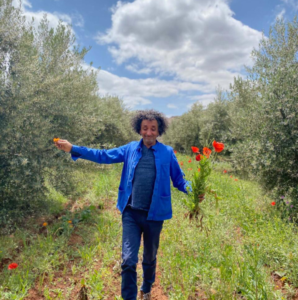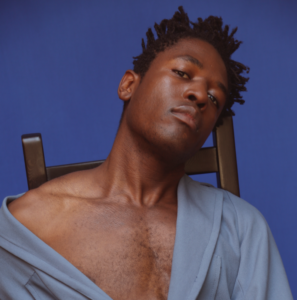This Is Called ‘a beach and a _____’

Date
Le mercredi 30 septembre 2020
Emplacement
Wichita, Kansas
Auteur
J-Rah
Editrice en chef
Tamy Emma Pepin
“I’ve always drawn better than I could speak. I learned to use language so others would understand me. That’s what you do, to engage with your surroundings; you communicate.”

Well what happens when your environment doesn’t speak the same language? What happens when you have a language of your own?
I’m from Wichita, Kansas. I went to school with kids who had a pet pony, and who had vacation homes, and who called the neighborhood I grew up in, “Little Africa”, because it was the only “black neighborhood ” in this area.
It was like no one noticed that was wrong. This was a place where it was normalized for my cousins to grow up with subtle burns on their hairline because all they knew were perms and hot combs. This was an environment where you found out that you’re “light-skinned ”, or mixed, when you didn’t know that and when that didn’t translate into your language. So you used your own language and drew pictures, not in response to that, but because it was yours.
Last year, I was speaking to a friend about shapes and architecture, and how we interact with our houses and spaces. That’s when I realized my house was built in a non-communicative way.
In the neighborhood I grew up in, there are about 3 floor-plan styles. They are pretty rectangular and spaced apart. Inside, the rooms are sectioned off, one long hallway ; evasive. The bathroom mirror is also low. It could be for the reason it’s built with kids in mind, who aren’t very tall. I think it was built like that because it wasn’t built for growing men. I think public housing isn’t built for growing men. I remember so many times, I didn’t know how to communicate in that space.
If I were a shape it would be something that has no corners, or lines, definitely not a rectangle.
J RAH:
I think about shapes and space a lot…
Tamy Emma Pepin (UPPL and ORB):
If you were a shape, which one would you be?
J Rah:
It’s funny you ask that because I was at the beach a couple of weeks ago with my friend Tyler, between shooting the visual assets for ‘the Two Extremes’ soundtrack, talking about this. If I were a shape it would be something that has no corners, or lines, definitely not a rectangle.
Tamy:
Maybe water?
J Rah:
Water makes sense, I like to visit water, but I’m more like air.
With a mind like air, why not be the wind?…” from the Ingland vagabond audio-collage film, 2018
RESHAPING ONE’S MIND, RESHAPING ONE’S FUTURE
The processes of “reshaping” and reform started long before social distancing and introspection became a shared experience in the times of coronavirus.
Through my current project and self-study called ‘the Two Extremes’, I observe space. When referring to space, it’s intended in a figurative sense ; mental space. Also literal ; like a house or room. The project is a Riddle, housing a series of projects… stories, colors and truths. Through conceptual images & sounds, ‘the Two Extremes’ tells a whimsical, refining tale of self-repair & discovery and the methods formed therein.
Forming, designing, learning this riddle… witnessing it unfold in my mind as if it were a silhouette of something. Distance and knowledge acquired were like light added to reveal the owner of this silhouette. It’d been my reference point, my familiarity when everyone was a stranger, my spiritual practice, my love, my name. It’s all I’ve had of my own.
The Emptying’ (of space) is a topic that the Artist tackles in PlexiGlass the film
Before mandatory social distancing, I was traveling for a while, living in Montreal for the better part of 2019. It was a beautiful, healing and growth period.
Very nougat, glassy blue-silvers and pixel-y leaves is how I describe it. It wasn’t rectangular, it didn’t have corners. It was free-form. So you could dance around it, not just sit in the middle of it and draw. I practiced being— versus micromanaging every single thought. I cried new tears of joy.
With this new heightened perspective, I returned to Kansas. That’s when the global pandemic started to play out : border restrictions, quarantining. I pretty much couldn’t leave, well at least not to where I wanted to go, the place I’d been establishing as a home for myself — Montreal.
Again, I sat in that rectangular room. I wanted to isolate.
For me, isolation is familiar, sometimes welcomed. Detested when I don’t feel safe communicating. Quarantining was like double-isolation. Everybody had to do it. Right when I started to learn healthy communication, and how to have my language, while being able to take part in another. Right when I wanted to go outside. Funny.
So being inside, I dealt with ever-so-familiar spaces in new ways. Recognizing it’s just a fear that was formed when I lacked information, on why and how I may respond to this environment. Letting myself know, it’s just a place, is empowering. Drawing a clear line between what is me, and what is just this place. It isn’t my identity. It’s just a place. It’s just a fear.
I’ve grown bored with reminding myself these same things. I started to implement movement to see the space differently, and reflected on how I felt, and why. I associated this space as rectangular and hadn’t allowed myself to see it as anything else. The space isn’t exactly the same as it was before, it changed. I changed ; I’ve grown.
I found a beach and a beach towel.
EMPTYING / DETACHING CONSTRUCTS
Growing up using social media, and it being such an interconnected thing for creatives, it almost feels like your inner voice is trying to cater to an audience.
With a lot of quiet space to think and re-evaluate, one should consider what constructs you’ve adhered to, and which of those to cut ties with.
Personally, I outgrew the idea or narrative maintained for people who met me at a zoom-in moment of a story, and for a version of myself that I’ve surpassed. To not think in captions, and talk to a cyberspace, an auditorium, was needed. To listen to myself in these quiet spaces, face myself in the empty, and reform the way I navigate spaces that are filled.
Allowing right now to be beautiful. Healing my lens. Thinking about what I like and how I feel. Writing “my” instead of “your”, because I also have things to heal from and learn, not just things to give. Not only being and feeling like a source, but also having an experience and letting it marinate. Chewing my food slower and tasting it. Knowing that rectangles are sometimes mirrors. To walk by, to notice things.
REPAIRING NOSTALGIA, HEALING, AND DEVELOPING A NEW LENS
I hung out with my nieces, got to know them, learned about things they like, held my nephew, took walks in a park, enjoyed the most beautiful spring days, just counted the trees… Each new tree you see for the first time is a discovery. I learned a lot from counting the trees. I also learned the value of expressing vulnerable topics to friends, to not over isolate, like I have before. In one conversation that was like lifting a sheer cloth off of my mind — as if it were a dome or a room — a friend mentioned, “the privilege of bliss”… that stuck with me.
It mostly reminded me that I need to know myself even in a situation I don’t like. I found honesty, and discovered a new type of love.
With my new lens, I visited water. Two weeks. I found a beach and a beach towel.
I walked on this beach, the sand, the water. I was cleansed in a way that I hadn’t ever fathomed true. I pat myself to dry with a beach towel, that is shaped like a rectangle, but when I ball it up, or fold it, it isn’t a rectangle anymore; it’s reshaped.
View J Rah’s newly launched site to experience the aforementioned film pieces, including the most recent work, Sheer Curtain, a short filmed during this ‘beach trip’ mentioned in this essay & Featured work, the Plexiglass mindthrowup ~docu-mix~ via jraheem.space
JRAH
jraheem.space
@JRAH33M


